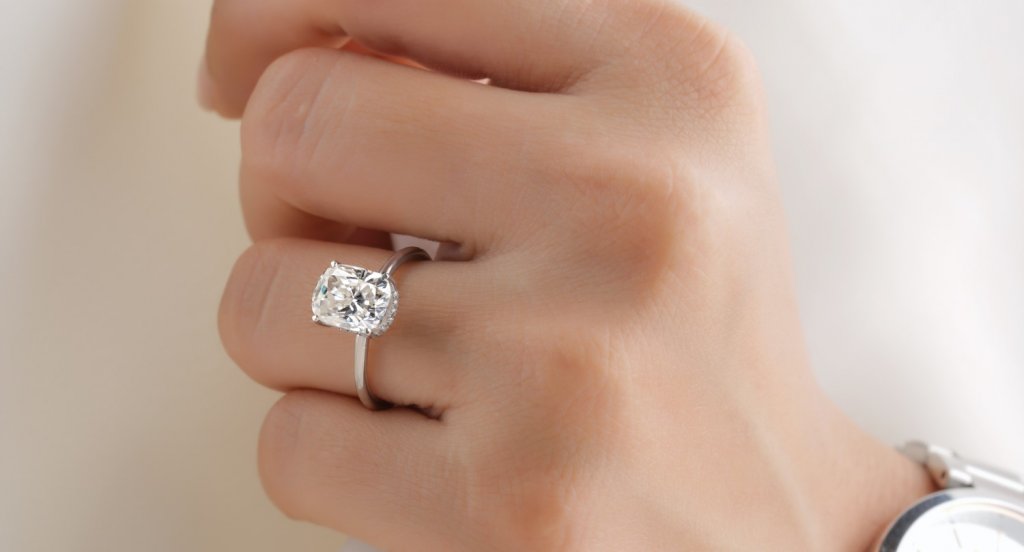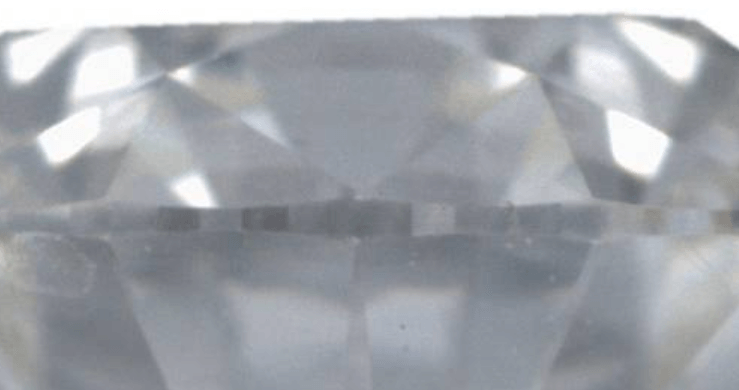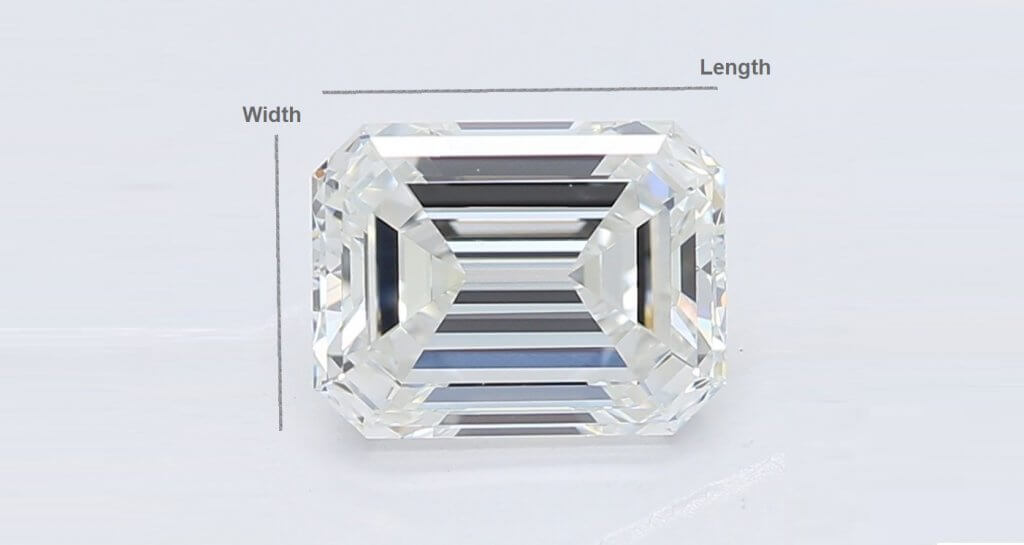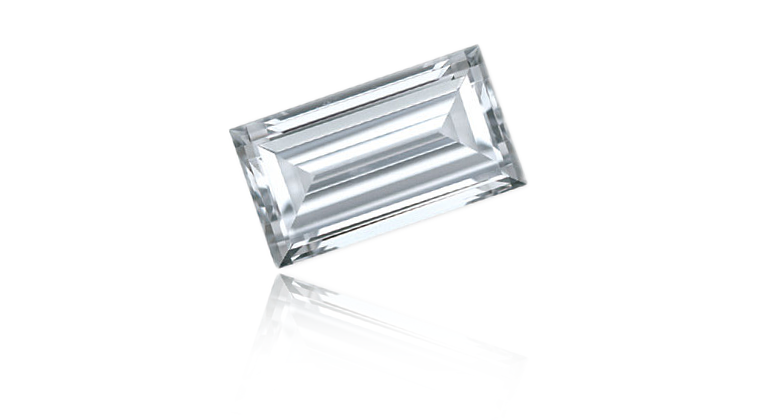Key Information About Diamond Girdles
Key Takeaways
- The diamond’s girdle is not as much of a feature as the crown or table, which comprise the diamond’s face-up appearance, but it is a vital component.
- The girdle represents the diamond’s widest point and, as a result, a pretty vulnerable point.
- Too thin, and the girdle will chip during wear – or even handling.
- Too thick, and the girdle will cast an unwanted shadow across the diamond’s crown, and, in worst case scenarios, impact light performance.
- A girdle won’t be the same size all the way around – it needs to fluctuate in size to a certain extent.
- Each diamond shape has its own ‘ideal range’ when it comes to girdle thickness. It’s important to look up your chosen shape’s ideal range before you start shopping.

Along with grades for Cut, Symmetry, and Polish, your GIA diamond report will also include a ‘grade’ for the stone’s culet – which you can read more about here – and for its girdle. And, while these details aren’t given the same level of importance as some of the more obvious features, it’s still important that you know how to interpret them.
A diamond’s girdle can make or (quite literally) break it, so here’s what you need to know.
What does girdle mean on a diamond?
The girdle is represented by a thin line running along the circumference or perimeter of the diamond, where the crown and the pavilion meet.
While, from a distance, the girdle may appear to be a sharp line dividing the upper portion of the diamond from the lower portion, its size and weight actually vary across the length of the girdle.
These variances are referred to as valleys and hills and aren’t a sign of a poor cut. They’re there to protect what is one of the most vulnerable parts of the diamond from chipping.
This is why the girdle features its own grade in the report – because, just like any other aspect of cut quality, there is a ‘sweet spot’ shoppers should always aim to fall into.
Keep in mind that, as with diamond proportion and ratio, the ideal range for a particular shape will differ from the ideal range for a different shape.
What Does the Girdle Do?
It’s there to offer some protection to the diamond, particularly during the process of setting it within jewelry.
Like the culet, a sharp point can be more prone to breaking. As a result, both the culet and the girdle may be thickened to ensure more protection to the stone during its transferal into the ring, and throughout its lifetime on the wearer’s finger.A thicker girdle does not cause as much disruption to the diamond’s appearance as a culet but, even so, thinner girdles are generally considered the preferable option.
Where is a diamond’s girdle?
Look at a diamond side-on, then follow the pavilion from the base (culet) to its widest point. That’s where you’ll find the girdle.

Why does a diamond’s girdle matter?
When cut too thinly, a girdle represents a major weak spot on the diamond. Cut too irregularly, and the diamond may suffer from poor symmetry. Too thick, and you may find the diamond suffers from ‘girdle reflection’, which will appear as a grey cast visible through the table.
The girdle isn’t a particularly valued part of the diamond’s appearance. Once mounted in a ring, there’s a strong chance you and the wearer will barely notice it. Still, it’s a mistake to presume that it’s a non-issue, or that the best diamonds are simply those with the least noticeable (or, in other words, thinnest) girdles.
In shapes featuring sharp points, for instance, like the Pear and Marquise, it’s considered a mark in their favor if the girdle is slightly thicker, since it offers a little extra protection to the weakest part of the cut.
Is a thick girdle on a diamond good or bad?
It can be good or bad, depending on how thick the girdle is. An extremely thick can, as we mentioned, cause an unsightly girdle reflection, but a girdle of moderate thickness is often seen as ideal.
The GIA’s scale utilizes the following grades:
- Extremely thin
- Very thin
- Thin
- Medium
- Slightly thick
- Thick
- Very thick
- Extremely thick
In your report, you will typically find two grades listed alongside one another – for instance, ‘Very Thin to Slightly Thick’ – which identify the thinnest points (valleys) and thickest points (hills) of the girdle.
In a Round Brilliant, for instance, a Thin – Slightly Thick girdle is generally regarded as the ideal, while either extreme – extremely thin or extremely thick – is a poor investment.
Do all diamonds have girdle reflection?
No – girdle reflection is a result of a girdle cut far too thick, meaning that too much of the diamond’s weight is contained within this part of the diamond and, as a result, light can’t travel in and out the diamond along the optimal path.
Instead, some light winds up escaping through the girdle itself. At the same time, an overly thick girdle can throw off the rest of the diamond’s proportions, making it a very poor choice in terms of light performance (sparkle). This is also known as a ‘fisheye’ and is indicative of a low-quality cut.
Girdle reflections are relatively easy to spot – a fact which should come as a strong reassurance to anyone preparing to buy a diamond. Nevertheless, you’ll want to read the specifications in the GIA report for yourself (as always) and give the diamond a thorough inspection when you go to view it in person.
In other words, consider this yet another reason not to shop for diamonds online.
Can a Chipped Diamond be Fixed?
No, once a diamond has sustained a chip there is no way of undoing that damage. In some cases, the owner of the diamond might choose to have it recut or repolished but doing so will inevitably lead to the loss of considerably more of the diamond’s original carat weight.
A chip also makes the diamond more vulnerable to sustaining more damage. This is why it is so important that a diamond’s girdle is not cut too thin. While the profile may look good, it’s an accident waiting to happen – particularly if you plan on wearing the diamond with any regularity.
So, What is the Ideal Girdle for a Diamond?
The ideal girdle thickness for any diamond depends on its shape, but a more general answer to this question will always be ‘not too thin, and not too thick’.
While that may seem like a vague, Goldilocks answer to a pretty important question, the key is to do your research into your chosen diamond shape. Each shape has its own ideal ranges for table, depth, length to width ratio, and learning these means being able to look beyond the grades for Cut, Symmetry, and Polish, and ensure that your diamond’s light performance is the very best it could be.
As we mentioned at the beginning of the article, the girdle isn’t generally seen as one of the most important considerations for shoppers since the accepted ranges are generally pretty wide, and it only tends to pose a major problem for the diamond in extreme cases (either extremely thin, or extremely thick). Nevertheless, don’t take that as a sign that you can overlook the girdle entirely.
A good jeweler will stop you from making any mistakes when it comes to cut quality, so start off by tracking down reputable jewelers in your area.

Sep 18, 2021 By Willyou.net
This Diamond Cut Outsparkle The Rest – An Insider’S Guide

Sep 18, 2021 By Willyou.net
Master The Secrets Of Diamond Proportion (Ratio)








